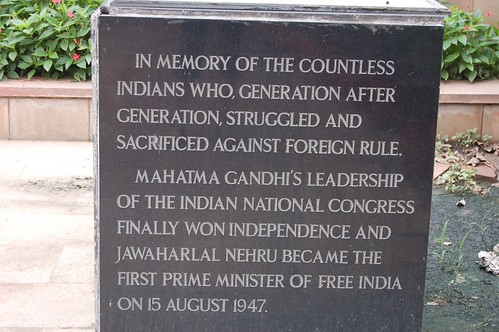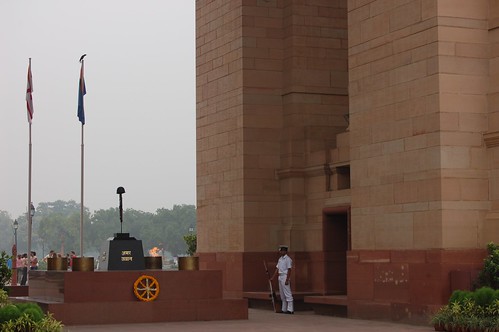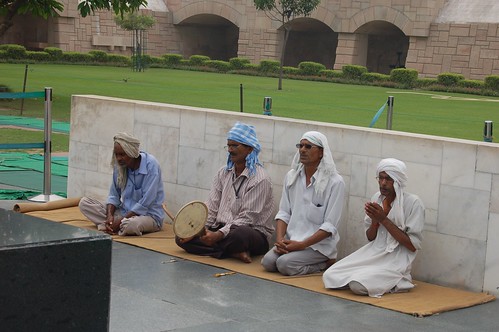A colleague asked me today how I liked India, and I suddenly realized I hadn’t actually noticed it.
Of course, the obvious (and usually disturbing) stuff slaps you in the face: toddlers tumbling and dancing at gridlocked intersections and then smacking on the taxi windows for a hand-out, men urinating on public walls and buildings without bothering to step out of public view, trash reeking on the roadside, rain-diluted puddles of holy cow poo splattered on sidewalks at the outdoor mall, flies landing on our sweaty foreheads as we wait outside our gate for the taxi to take us to school, washcloths draped over the taxi meters to ensure you get fleeced, and other familiar stereotypes of New Delhi. I’m amazed at how quickly those things stopped shocking me. Already, it’s all just part of living here. Normal.
Settling in to a new home and figuring out new jobs has consumed us for the last two and half weeks so that, honestly, we could be in any country right now. Well, any country that serves dahl and naan for lunch every day in the staff canteen.
With that in mind, I decided to take some time to reflect on New Delhi beyond our home and workplace. It’s not much – just one day of experiences – but here goes.
Soon after we arrived, the school organized a daylong tour around New Delhi for the new teachers, but it was a blur. My jetlagged brain was as hazy as the overcast sky. People snickered at my note-taking, but otherwise I wouldn’t have remembered what we did. Our tour leader Bandana (pronounced BAHN-duh-nuh), a former librarian at AES whose name means “worship” in Hindi, met us in the school’s board room before herding us on to the bus. She gave a crash course on India’s 3,500-year history, the country’s democratic political system (which works so well, she says, because “we don’t follow any rules”), a few of the many Hindu gods, and her morning routine, which includes wrapping herself in more than six yards of exquisite fabric and sticking on the ubiquitous bindi. “When you put it on, you should say ‘I can see the world through my two eyes; let my inner eye open,'” she explained.
The new teachers and their children crammed on a small bus, filing off for quick visits to a few interesting spots in the city:
First we stopped at the Salt March statue.
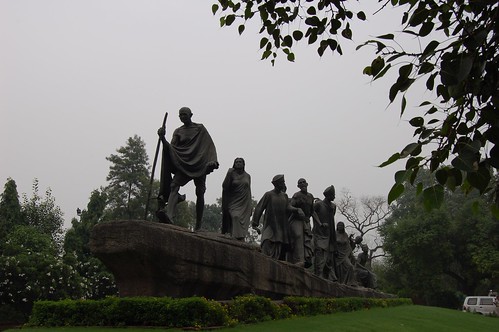
According to the website A Force More Powerful,
By March 1930 the people of India are growing more restless under the yoke of British rule. Indian nationalists turn to Gandhi to lead a campaign for full independence. Having successfully employed nonviolent sanctions while fighting for suppressed Indians in South Africa, and then again in India in the 1920s, Gandhi moves to confront the colonial rulers in ways that average Indians can understand and be part of.
His first target is the British monopoly on the manufacture and sale of salt, and he leads a 250-mile march to the sea, where he and thousands of protestors violate the law by making their own salt. The British crack down, and many, including Gandhi, go to jail.
But civil disobedience spreads, and the campaign encompasses a boycott of British cloth and the resignations of local Indian officials who work for the British. All this puts great pressure on the government, and the British viceroy opens talks with Gandhi, who opts for compromise. Although the campaign does not dislodge the British from India, it shatters the legitimacy of British control and rallies the Indian people to the cause of independence, which eventually comes in 1947.
We also checked out the India Gate, the national monument of India, which was originally constructed as a dramatic entrance to the city for British colonial leaders. It now commemorates the 90,000 soldiers who died in World War I and the Third Anglo-Afghan War. The Tomb of the Unknown Soldier is marked with an eternal flame under the 42-meter arch.
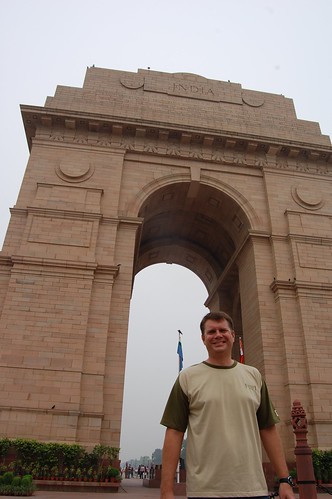
Bandana pointed out other important landmarks near the India Gate, but we all struggled to find a historical context. Tony and I kept saying, “Oooh, we need to come back to this some day.” And we will.
Our final sightseeing stop of the day was Rajghat, Gandhi’s cremation site. At the time, I actually didn’t realize that’s where we were. I just learned that by googling it. Pathetic. According to Delhi City Guide, we were supposed to walk around the memorial three times, which we also didn’t know at the time. Don’t despair, potential visitors! I’ll do some research before I take you out in the city.
This quote greeted us at the entrance:

Gandhi’s humble tomb sits in the center of a grassy park.
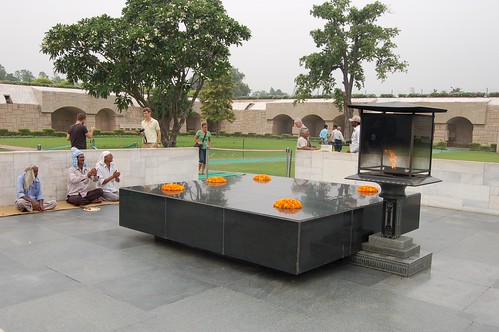
That was about all our culture-overloaded minds and weary bodies could take in one day, so Bandana directed the bus driver to a gorgeous restaurant, Indian Accent, for an indulgent lunch. Again, being new to India, I am useless at describing the delicacies we enjoyed at this little oasis. All I know is I ate so many appetizers (the waiters kept waving plates of lovely morsels in front of my face; how could I resist?) and drank so much sangria that my belly was full before the buffet line opened. I forced myself to pile up the plate with a little of everything. I wish I could tell you what everything was, but I can only tell you that I promise to conduct further culinary research in the coming months.
Since the day of our tour with Bandana, we have been tethered to school and our apartment with a few social gatherings … at school or other people’s houses. I’m itching to explore New Delhi and the rest of India, but I also look forward to the day when I can find the cafeteria without getting lost and I can relax on my living room sofa without first clearing a path through the moving boxes. For now, I have to focus on finding some balance, staying in the moment, allowing my new life unfold in its own time and letting my inner eye open. Breathe.

